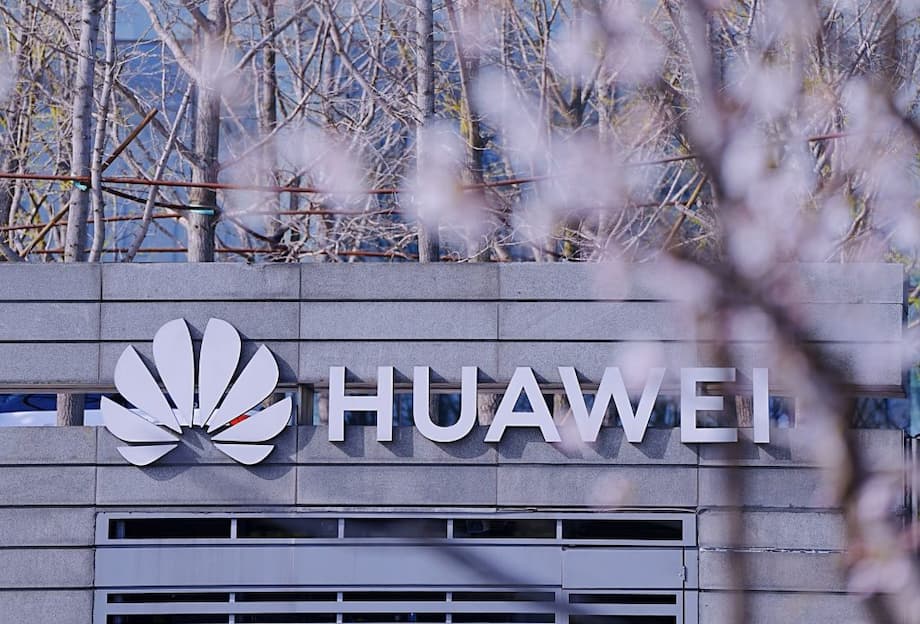Huawei’s Kunpeng 930: A New Chapter in China’s Server Chip Ambitions
Huawei has once again captured the attention of the global semiconductor industry with the leak and subsequent teardown of its latest server CPU, the Kunpeng 930. This chip, shrouded in speculation and technical intrigue, stands at the crossroads of cutting-edge design and geopolitical tension. At the heart of the debate is a simple but critical question: Who manufactured the Kunpeng 930’s advanced compute dies—Taiwan’s TSMC or China’s SMIC? The answer has far-reaching implications for technology, supply chains, and the ongoing US-China tech rivalry.
- Huawei’s Kunpeng 930: A New Chapter in China’s Server Chip Ambitions
- What Makes the Kunpeng 930 So Significant?
- TSMC or SMIC: Who Made the Compute Dies?
- How Does the Kunpeng 930 Compare to Global Competitors?
- Chiplet Design: Why It Matters
- Geopolitical Implications: The US-China Tech Race
- Technical Challenges and Future Prospects
- In Summary
What Makes the Kunpeng 930 So Significant?
The Kunpeng 930 is not just another server processor. It represents a leap forward for Huawei and, by extension, China’s ambitions in high-performance computing. The chip is a successor to the Kunpeng 920, which debuted in 2019 and was built on a 7nm process. The 930, according to multiple teardown reports, is a hybrid marvel: it combines compute dies manufactured on a 5nm node with a massive I/O die produced on a more mature process, possibly 14nm. This chiplet-based design is a hallmark of modern server CPUs, allowing for greater scalability and flexibility.
Key technical highlights include:
- 120 ARM-based TaiShan cores spread across four compute dies
- 91MB of shared L3 cache and 2MB L2 cache per core
- 96 PCIe lanes for high-speed connectivity
- 16-channel DDR5 memory support for massive bandwidth
- Dual-socket motherboard compatibility for enterprise-scale deployments
The chip package itself is substantial, measuring about 77.5mm by 58.0mm. The I/O die alone is over 80% larger than its predecessor, reflecting the demands of increased memory and connectivity.
TSMC or SMIC: Who Made the Compute Dies?
The central mystery surrounding the Kunpeng 930 is the origin of its compute dies. Several industry sources, including TrendForce, Wccftech, and TechPowerUp, report that the compute tiles are built on a 5nm node, with strong indications pointing to TSMC as the foundry. This is significant because TSMC, based in Taiwan, is the world’s leading advanced chip manufacturer. However, US sanctions have severely restricted Huawei’s access to TSMC’s most advanced nodes since 2020.
Some analysts suggest that the chips could have been produced before the sanctions took full effect, or that Huawei had stockpiled wafers. Others speculate that SMIC, China’s leading foundry, may have achieved a process node close to TSMC’s 5nm, known as N+3, which offers transistor density between TSMC’s N6 and Samsung’s 5nm nodes. However, most technical teardowns, including those by independent analysts on YouTube and BiliBili, point to TSMC’s N5 process as the likely source for the compute dies, while the I/O die is attributed to SMIC’s 14nm or N+3 process.
As one industry analyst explained, “The hybrid approach allows Huawei to maximize performance where it matters most—compute and cache—while leveraging domestic manufacturing for less critical I/O functions.”
This strategy reflects both technical pragmatism and the realities of global supply constraints.
How Does the Kunpeng 930 Compare to Global Competitors?
In terms of raw specifications, the Kunpeng 930 is a formidable chip. Its 120-core count and massive cache put it in the same conversation as top-tier offerings from AMD (such as the EPYC series) and Intel (Xeon Scalable). The use of ARM-based TaiShan cores, developed in-house by Huawei, signals a commitment to architectural independence and optimization for Chinese enterprise workloads.
However, there are caveats. While the chip’s design is advanced, the use of a five-year-old 5nm node (by global standards) means it lags behind the latest Western chips, which are moving toward 3nm and even 2nm processes. According to DigiTimes, this reliance on older nodes is a direct consequence of US export controls, which have blocked Huawei’s access to the newest manufacturing technologies.
Despite these limitations, the Kunpeng 930 is a strong contender for domestic Chinese markets, where supply chain resilience and self-sufficiency are increasingly prioritized. The chip’s support for DDR5 memory, PCIe 4.0/5.0, and dual-socket configurations makes it suitable for a wide range of data center and cloud applications.
Chiplet Design: Why It Matters
The Kunpeng 930’s chiplet architecture is a major step forward for Huawei. By splitting the processor into multiple compute dies and a separate I/O die, Huawei can optimize each component for its specific function. The compute dies, built on an advanced node, handle the heavy lifting—processing, cache, and memory control. The I/O die, produced on a less advanced but higher-yield process, manages connectivity and data routing.
This approach offers several advantages:
- Scalability: More cores and cache can be added by increasing the number of compute chiplets.
- Yield and Cost: Smaller dies are easier and cheaper to manufacture, reducing the risk of defects.
- Supply Chain Flexibility: Different foundries can be used for different parts, mitigating the impact of sanctions or shortages.
AMD and Intel have both adopted chiplet designs in their latest server CPUs, underscoring its importance as a trend in modern processor engineering.
Geopolitical Implications: The US-China Tech Race
The Kunpeng 930 is more than just a technical achievement; it is a symbol of China’s determination to build a self-reliant semiconductor ecosystem. Since 2019, US sanctions have targeted Huawei’s access to advanced chipmaking tools and foundries, aiming to slow China’s progress in critical technologies. The fact that Huawei has produced a 5nm-class server CPU—regardless of whether it was made at TSMC or SMIC—demonstrates both ingenuity and resilience.
Looking ahead, Huawei is reportedly investing heavily in next-generation nodes, including 3nm Gate-All-Around (GAA) technology and even carbon-based transistors. According to Wccftech, the company aims to tape out 3nm GAA chips by 2026, putting it on a collision course with global leaders like Samsung and TSMC.
As a Huawei spokesperson noted, “Our goal is to achieve technological independence and provide world-class solutions for China’s digital infrastructure.”
This ambition is echoed by China’s broader push for semiconductor self-sufficiency, with massive investments in domestic foundries, materials, and talent.
Technical Challenges and Future Prospects
While the Kunpeng 930 is a technical tour de force, it is not without challenges. The hybrid manufacturing approach requires careful integration of dies from different foundries, which can introduce compatibility and performance issues. Firmware and software optimization will be critical to unlocking the chip’s full potential, especially in demanding server workloads.
Benchmark results for the Kunpeng 930 are still awaited, and real-world performance will depend on factors such as memory bandwidth, I/O efficiency, and software ecosystem support. Huawei’s in-house TaiShan cores, while powerful, must compete with the mature x86 ecosystem dominated by AMD and Intel.
Nonetheless, the Kunpeng 930 sets a new bar for Chinese server CPUs and signals that Huawei—and by extension, China—is not standing still in the face of external pressure.
In Summary
- The Huawei Kunpeng 930 is a major leap in server CPU design, featuring 120 ARM-based cores, massive cache, and advanced chiplet architecture.
- The chip’s compute dies are likely manufactured on TSMC’s 5nm node, with the I/O die produced at SMIC, reflecting a hybrid supply chain strategy.
- US sanctions have limited Huawei’s access to cutting-edge nodes, but the company continues to innovate and invest in next-generation technologies.
- The Kunpeng 930 is well-positioned for China’s domestic server market, offering strong competition to Western chips despite process node limitations.
- Huawei’s roadmap includes ambitious plans for 3nm GAA chips and new materials, signaling ongoing efforts to achieve semiconductor independence.












